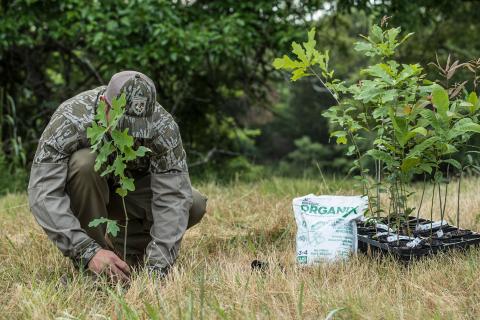Todd Amenrud | Originally published in GameKeepers: Farming for Wildlife Magazine
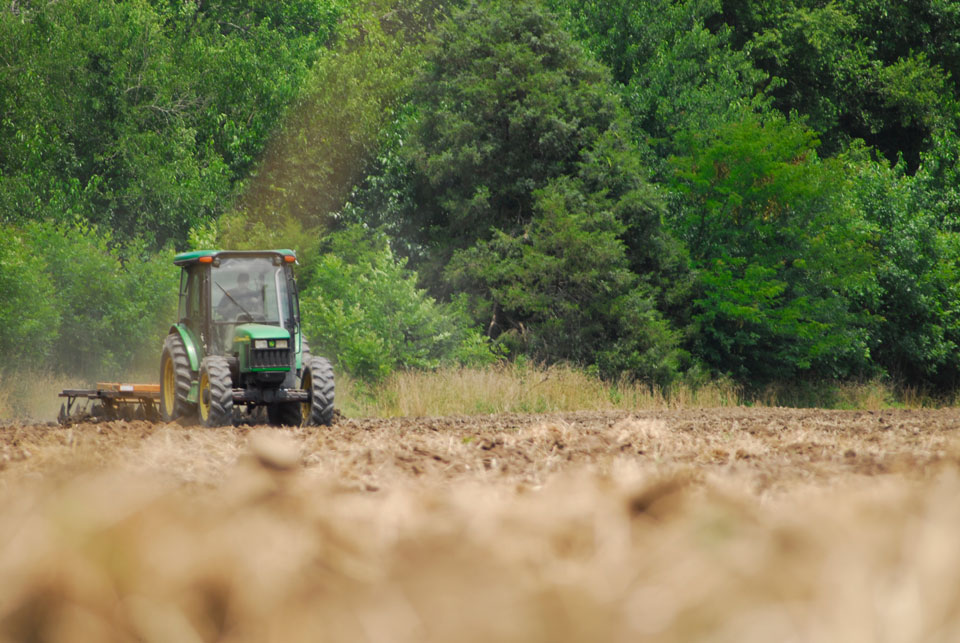
It amazes me when people think they're saving money by purchasing cheap commodity seed. If you look at the cost of the seed, your herbicide, fertilizer, lime or the fuel in your ATV or tractor all cost more than the seed! I’m not saying that you need to buy the most expensive seed either, but in most cases you actually DO NOT save money by purchasing cheap seed. There are likely reasons why it is CHEAP! Probably the best explanation is because it doesn't have one or more of the desirable characteristics needed for the end result that it's being sold for. One should not worry about seed cost, they should worry about seed quality and plant characteristics!
I’ve worked for BioLogic since it came to be, and we have always been known as the “top of the line,” the “Cadillac” of food plot seeds. With that identity consumers associate a high price; however, that is far from the truth. In doing a quick online survey of clover seed costs from some of the larger sporting goods retailers in the country, our Clover Plus was actually “16 percent to 26 percent less expensive per acre” than our next four closest competitors! This was using the cost of the largest bag available and looking at THE COST PER ACRE, not the cost per bag—which is how all consumers should figure seed costs.
This is not to say that Clover Plus or Non-Typical are “cheap seed blends”—there were commodity choices that were cheaper—and again, one should look at quality and quantity in union. My points here are; consumers get fooled in their sporting goods store when in the seed isle. Competitors try selling you a 2.25 acre bag, or 2.5 acres worth of seed—competing against our three acre bag to make it look like theirs costs less. Even at three acres ours was less expensive. Because of this, they can afford to pay for more TV advertising. When in the seed isle, the average consumer has no forethought; they look at the price tag on the bag and can’t see past it. Is this seed higher quality? How much is in the bag (remember to compare price by the acre)? Is it just seed or are their germination boosters, or seed coatings that help with growth, seed survivability, stand vigor and longevity?
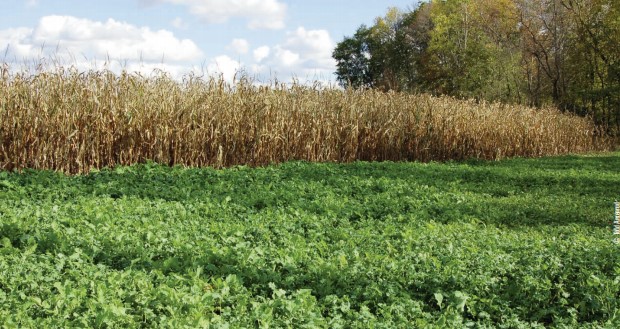
Regardless of cost, food plot farmers should test things for themselves—I’ve always thought this and learned it many years ago when I started with BioLogic; from people like Toxey Haas, Bobby Cole and Dr. Grant Woods, folks that knew far more than I on this subject. Really, meticulous research and testing to find out “what is best” is what BioLogic is all about. I used to help Dr. Woods with research and I can remember getting sent food plot seeds from hundreds of cultivars from all around the world. We would plant each one in what is called a “cafeteria test,” where there would be dozens of 10 foot squares where a computer would randomly select where to plant each of the seeds twice. We would erect a utilization cage on each 10 foot square, then check each square often and record the findings. A seed doesn’t make it into one of our blends unless it’s simply “the best.”
I know this all sounds like a “BioLogic commercial,” but in reality you could plant most of the seeds at your local sporting goods retailer, and most of them would grow. So how do you know you’re getting the best quality? What is the best deal?
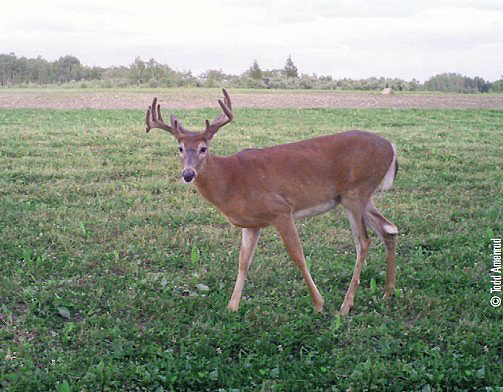
soil, which crops your herd prefers and which do best with your planting
practices and growing season.
So you scoop up some cheap “commodity clovers” into a brown paper bag at your local Feed & Seed dealer and you plant it in plot X. You also plant clover that costs a bit more, but is the right stuff for the job in plot B—you think you've saved money in plot X. Once again, most people only think up until that point. They don't realize that you've just lost money in plot X because the clover in plot B is going to produce tons and tons more forage! It’s more attractive to your herd and it is better for them. The seed in plot B has also been treated with coating to help it perform better from germination throughout the going process. Figure that into the cost, but then also figure it will also last a year or two longer. I'm sorry, but it just seems so clearly black and white to me that I find it absurd when someone thinks they're saving money in this way. You are better off planting less acreage and doing it right than planting a second-rate food plot seed on twice the acreage.
BioLogic gets a number of our seeds from New Zealand. The reason is because of their antler and venison industries—two of the country’s top exports. We do use other cultivars developed in different regions including the U.S., Canada and the Mediterranean, but wherever possible we’ll try to use the technology from the venison industry in New Zealand because they are years ahead of the United States.
For many years scientists here in the U.S. have taken our “cash crops” and cross-bred them and genetically manipulated them for desirable characteristics for a specific end utilization. The end result might be livestock consumption or human consumption, but the end purpose has never been “whitetail consumption.” In New Zealand a deer’s gut IS the end use. The New Zealand deer ranchers want to put on huge weight and grow massive bone as fast and efficiently as possible. You can actually graduate from college in New Zealand with a specific degree in “Deer Forage Production!” Imagine if here in the U.S. our top exports were deer antler and venison!
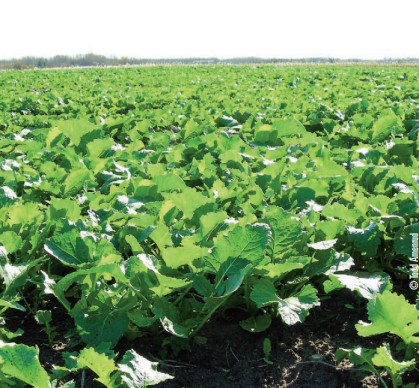
discover the characteristics of the plants that your seeds will
grow. Your seed choice should be based on plant
characteristics and selecting the plants that will best help to
achieve your management goals, not because you can save
60 cents on your purchase.
When you feed a whitetail, you’re not feeding their gut; you’re feeding the bacteria and enzymes in their four-chambered gut. Not only do you want protein content in their forage, but you want protein that can be broken down and absorbed by a whitetails’ digestive system. Protein content does absolutely NO good if it can’t be used. The plants in many of BioLogic’s blends have been cross-bred and genetically engineered specifically for whitetail consumption. So not only do they have off the chart vitamin, mineral and protein content, but when a whitetail eats them they are able to use the nutrients. We use whichever plant will be the best for the job, not the cheapest plant we can find. Do you want to grow crops meant for bovines or plants meant for whitetails?
In fact, you can see the difference for yourself with almost all US engineered clovers—they grow very tall if you don’t mow them. That's because they’re genetically engineered to do so because here in the U.S., cash-crop farmers want to feed it to cattle or bale it. A bovine has a short neck so the plant grows tall to meet the cow's mouth, or it produces a tall stalk so it’s easier to bale. We call it "feel good" clover, because when you stand back and look at your “crotch-high crop” when it starts to flower you "feel good" looking at your tall plants. But that’s exactly what you DO NOT WANT! For whitetails you DON’T want the plant to put its energy into producing a tall stalk you want it to produce leaf matter. Our new Non-Typical has phenomenal leaf production.
Two of our competition’s TV commercials say that “nobody does the research that they do.” That actually hits me particularly the wrong way because I worked for a number of years in testing and research helping Dr. Grant Woods. It’s simply a bold-face lie, but apparently you can say anything on TV and it’s believed by the masses. I’ll bet you that at the time, I alone did more research and testing by myself than most of our competition. But it’s simply physically IMPOSSIBLE for our competition to do as much testing as we do—we test in both hemispheres! If there are whitetails on the continent (above the Mexican border), we have a test farm or research facility within 200 miles of the spot and usually it’s less than that. We want to know how the product works on mule deer in Colorado, or whitetails in Texas, Wisconsin, Saskatchewan or Nova Scotia.
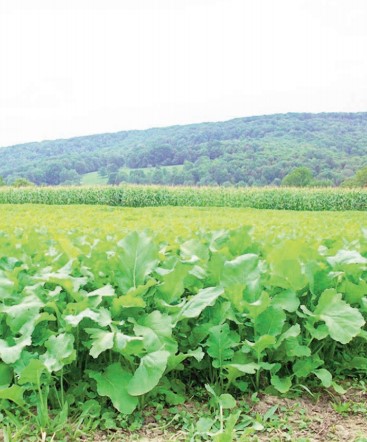
producing forages for deer because of their antler and
venison industries. Imagine if our (the USA) top
exports were venison and antler! We would spend
billions on cross-breeding and genetically engineering
plants.
Let’s face it; many people who plant food plots grow their crops mainly for attraction. Aside from being better for health and antler growth you’ll also see the difference in attraction and an increase in deer sightings. Obviously one of the most important characteristics we test for is attraction. We want to make sure that whitetails favor the plants that we are putting into our blends better than others similar to it. This was one of the reasons I loved to test different crops with Dr. Woods—I got to see a couple years before everybody else exactly which plants worked best to suck whitetails off of my neighbor’s property!
Another detail you’ll see is that these plants are meant to grow in food plot situations. You don’t need to have the knowledge, pesticides, herbicides and equipment that a cash-crop farmer has. Everybody can have success with our blends.
Another difference is support. We have people that will help you through every aspect of the process. Heck, you can test different crops for yourself. See which cultivars grow the best in your soil, which crops your herd prefers and which do best with your planting practices and growing season. have questions about management details other than planting food plots or trees and we’re happy to help. We’ll help you with specific planting or product questions, help you develop a management plan or help you to manage other species—any questions you have. Have you sent an email to our competition? How did they reply?
If you have any question in your mind, I would say to test it for yourself. Plant our competition’s blend or commodity seed and then plant the same type of blend from BioLogic (obviously you need to “compare apples to apples”). Plant them the same way, with the same fertilizer at the same time, etc. Put out a utilization cage on each plot. (A utilization cage is just a two or three foot round of wire, basically a wire cage). This way you can see what the deer are consuming on the outside of the cage and what the potential of your plants are on the inside. Then you will see for yourself. Customers who have already planted our blends are our best advertising. If you haven’t had success with one of our products, we want to know. Obviously other manufacturers’ products and even commodity seeds will grow…and deer will eat them, but day in and day out we believe ours will outperform all others.















